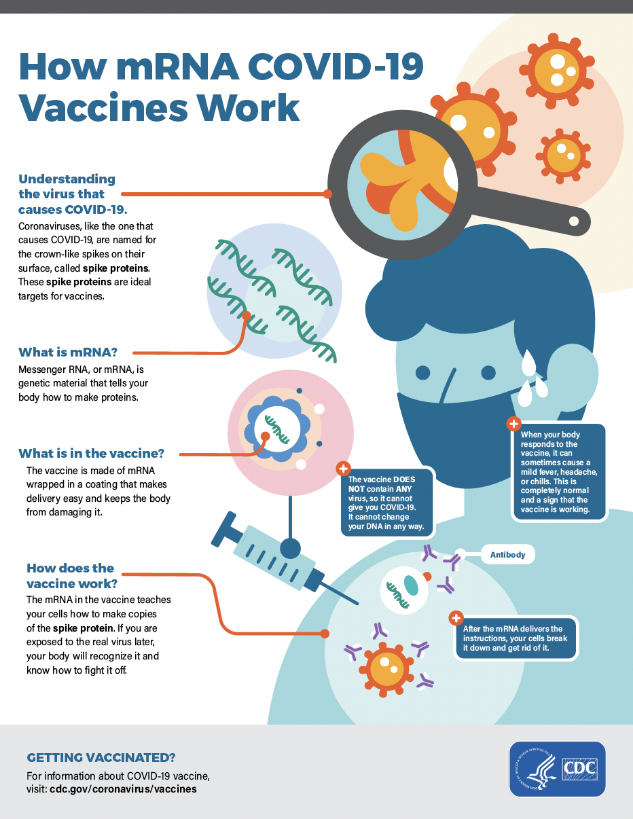Messenger RNA or mRNA vaccines are created in a laboratory to teach our cells how to make a protein—or even just a piece of a protein—that triggers an immune response inside our bodies. This immune response, which produces antibodies, is what helps protect us from getting sick from that germ in the future. This process differs from many other vaccines that put a weakened or inactivated germ into our bodies.
It is important to note that none of these vaccines can give you COVID-19. The vaccines do not use any live virus. Therefore, vaccines cannot cause infection with the virus that causes COVID-19 or other viruses. Of importance, they do not affect or interact with our DNA because they do not enter the nucleus of the cell where our DNA (genetic material) is located, so they cannot change or influence our genes.
Researchers have been studying and working with mRNA vaccines for decades:
- In fact, mRNA vaccines have been studied before for flu, Zika, rabies, and cytomegalovirus (CMV).
- Beyond vaccines, cancer research has also used mRNA to trigger the immune system to target specific cancer cells.
mRNA-based therapeutics are expected to become a powerful therapy for a variety of diseases, including infectious diseases, metabolic genetic diseases, cancer, and cardiovascular and cerebrovascular diseases.
This infographic explains how mRNA COVID-19 vaccines work.
Additional languages: Arabic, Simplified Chinese, Traditional Chinese, Korean, Russian, Tagalog, Spanish, Vietnamese, Hindi
